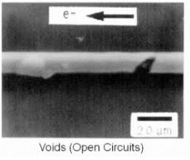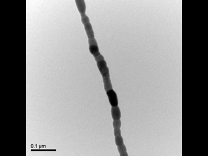
|
Introduction |
|
In our project, we seek to investigate two basic influences on the shape change of a multigrain structure (a row of grains) : 1. Surface Diffusion, and 2. Surface tension. Surface diffusion is a kinetic term where atoms move across an interface and where mass conservation is considered. On the other hand, surface tension considerations are based solely on the minimization of free energy. In our model, we seek to investigate the interplay between surface diffusion (kinetics) and surface tension in the case of a row of grains, often referred to a bamboo structure. By adding the considerations to surface diffusion and mass conservation, we gain insight to a more realistic case of structural evolution. We will first look at the evolution of a single grain under both influences. We then add in a grain boundary, creating a two-grain structure in attempt to look at the complexities that exists in multigrain bamboo structures. While most materials are multigrain structured , we were motivated to look at a bamboo structure as it is most prevalent in electronics. Single grain-wide copper interconnnects often exists in integrated circuits (Fig. 1). These interconnects can morph and change shape based on different influences (surface diffusion, surface tension and electromigration etc). In certain cases, voids or pinching off could develop and therefore affecting electric conductivity (Fig 2). |



|
Fig 1. Bamboo structured copper interconnect (Adopted from ECE University of Singapore) |
|
Fig 2. Void development in copper interconnect (Adopted from W.D. Nix et al. 1992) |
|
Bamboo structured GRain boundary migration and diffusion Drew Johnson, Eeshan Khanpara, Siu on Tung ME574 W14 |